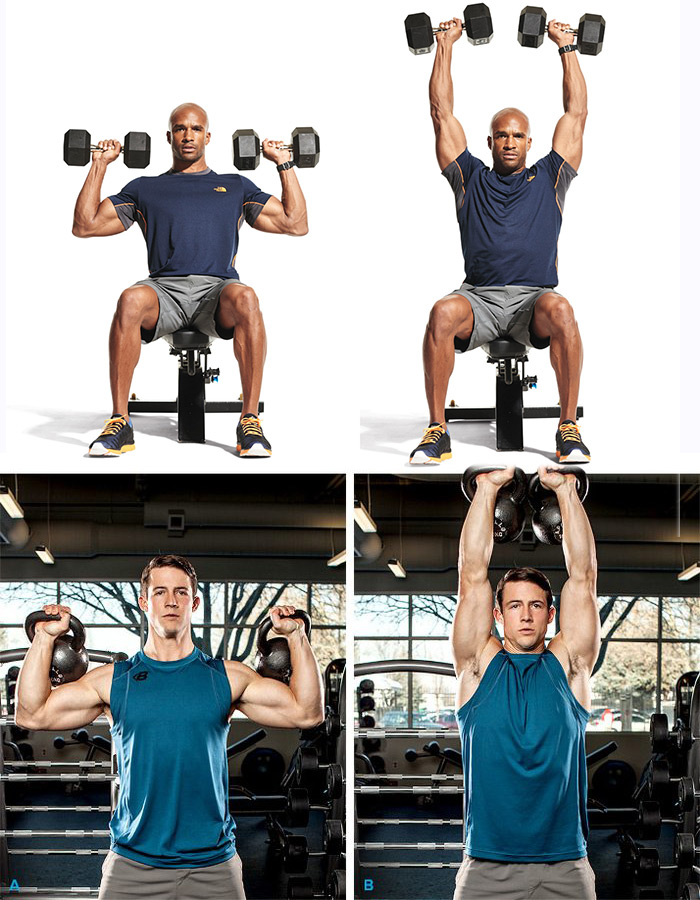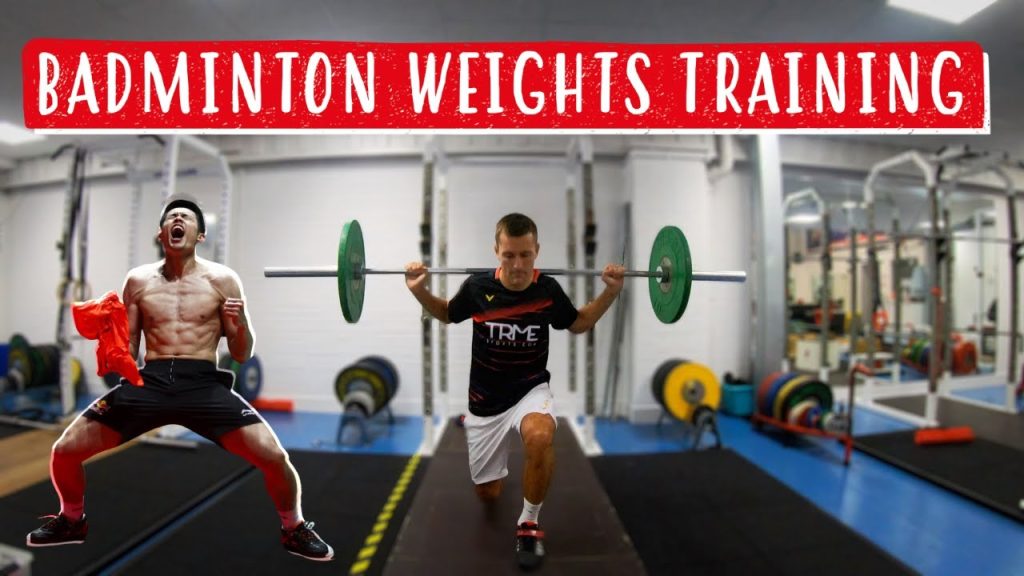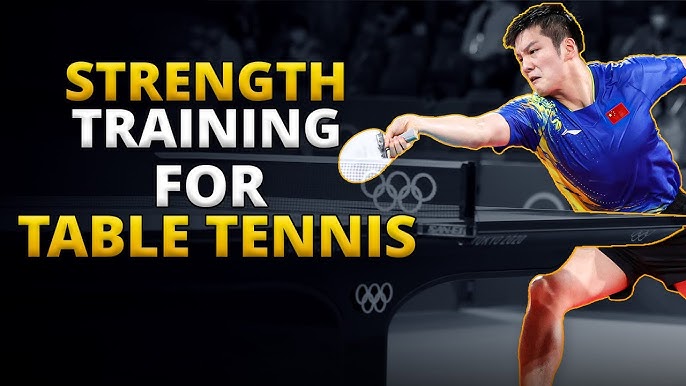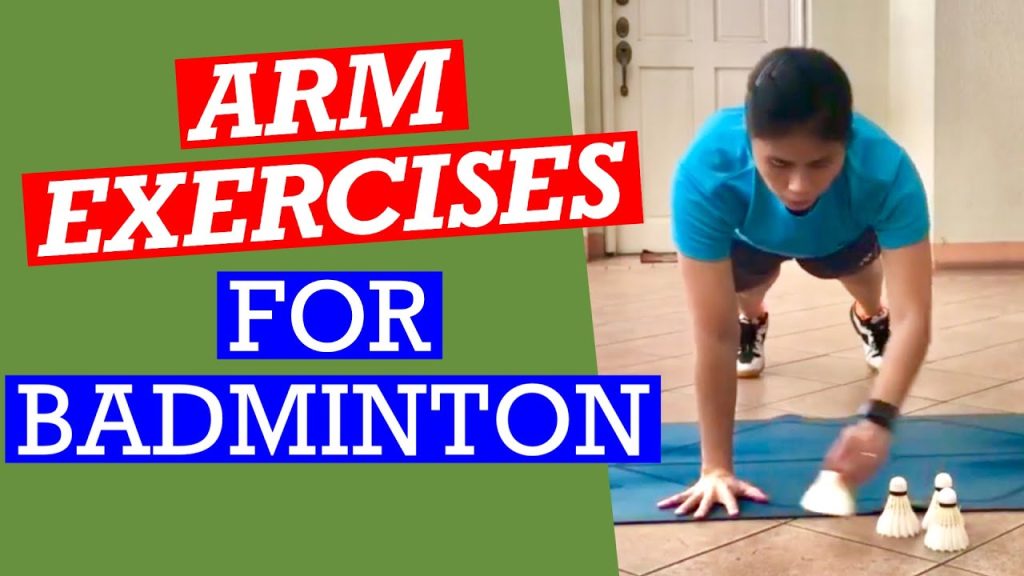Badminton demands agility, speed, and endurance. Strength and fitness training can elevate your game.
Badminton isn’t just about hitting the shuttlecock. It’s a sport requiring quick reflexes and powerful movements. Building strength and fitness can help you perform better on the court. Strong muscles support rapid movements and reduce injury risks. Good fitness levels improve your stamina, helping you stay energetic during long matches.
Training your body correctly can make a significant difference in your game. Whether you are a beginner or seasoned player, integrating strength and fitness routines into your training can enhance your performance. With the right exercises, you can develop the agility and power needed to excel in badminton.
Introduction To Badminton Training
Badminton is a fast-paced sport that requires agility, speed, and precision. To excel, players need more than just skill. They need strength and fitness. This blog section will delve into why strength and fitness training is crucial for badminton players.
Importance Of Strength And Fitness
Strength and fitness are the backbone of any successful badminton player. Strength helps in powerful smashes and quick movements. Fitness ensures stamina and endurance during long matches.
Strong muscles reduce the risk of injuries. They also support better posture and balance on the court. Good fitness levels mean you can keep up with the fast pace of the game.
Benefits For Badminton Players
Regular strength and fitness training offers several benefits:
- Improved agility: Quick and sharp movements are essential in badminton.
- Enhanced power: Strong muscles contribute to powerful shots.
- Better endurance: High fitness levels help sustain energy throughout the match.
- Reduced injury risk: Strong muscles and good fitness lower the chance of injuries.
- Mental toughness: Physical training also boosts confidence and mental resilience.
Strength and fitness training is vital for those serious about badminton. It helps players perform at their best and enjoy the game more.

Credit: www.sportsuncle.com
Key Muscle Groups
Strength and fitness training for badminton involve focusing on key muscle groups. These muscle groups play a crucial role in enhancing performance. They support agility, power, and endurance on the court. Understanding these muscle groups is essential for effective training.
Upper Body Muscles
The upper body muscles are vital for powerful shots. They include the shoulders, chest, and arms. Strong shoulders help with quick and powerful movements. The chest muscles support strong smashes and clears. Well-developed arm muscles improve racket control and shot precision.
Lower Body Muscles
The lower body muscles provide stability and power. Key muscles include the quadriceps, hamstrings, and calves. Strong quadriceps enhance jumping ability and quick movements. The hamstrings support balance and reduce injury risk. Calf muscles improve speed and agility on the court.
Core Muscles
The core muscles support overall body stability. They include the abdominal and lower back muscles. Strong abs improve balance and rotational power. The lower back muscles provide support during lunges and dives. A strong core enhances overall performance and reduces injury risk.
Strength Training Exercises
Strength training is crucial for badminton players. It helps improve power, agility, and endurance. By integrating strength training exercises, you can enhance your performance on the court. Below are some effective exercises to help you get started.
Weightlifting Routines
Weightlifting is an excellent way to build strength. It targets different muscle groups, giving you a balanced workout. Here are some routines to try:
- Squats: Build leg strength and stability.
- Deadlifts: Improve core and lower back strength.
- Bench Press: Strengthen chest and arm muscles.
- Overhead Press: Enhance shoulder and upper body strength.
| Exercise | Sets | Reps |
|---|---|---|
| Squats | 3 | 10-12 |
| Deadlifts | 3 | 8-10 |
| Bench Press | 3 | 10-12 |
| Overhead Press | 3 | 8-10 |
Bodyweight Exercises
Bodyweight exercises are perfect for those without access to gym equipment. They rely on your body weight to build strength. These exercises can be done anywhere, anytime.
- Push-ups: Strengthen arms, chest, and core.
- Lunges: Improve leg strength and balance.
- Planks: Enhance core stability and endurance.
- Burpees: Boost overall strength and cardiovascular fitness.
By incorporating these exercises into your training routine, you will see significant improvements in your badminton performance. Remember, consistency is key.
Cardiovascular Fitness
Cardiovascular fitness is crucial for badminton players. It helps maintain high energy levels during long matches. This type of fitness ensures efficient oxygen delivery to muscles. It helps sustain performance and reduces fatigue. Two main types of cardiovascular training are beneficial for badminton: Endurance Training and High-Intensity Interval Training.
Endurance Training
Endurance training builds stamina. It increases your heart’s capacity to pump blood. Longer sessions of moderate-intensity workouts are key. Activities like jogging, swimming, and cycling work well. Aim for at least 30 minutes, three times a week. Consistency is important. This training helps you stay active throughout intense matches.
High-intensity Interval Training
High-Intensity Interval Training (HIIT) is effective for badminton. It involves short bursts of intense activity. These are followed by brief rest periods. HIIT improves cardiovascular capacity and muscle endurance. Exercises like sprinting, jump rope, and shuttle runs are great choices. Sessions can be short, around 20 minutes. Perform these workouts twice a week for best results.
Flexibility And Mobility
Flexibility and mobility are crucial components of badminton fitness. These elements enhance your performance on the court. They help you move swiftly and react promptly. Improving flexibility and mobility can prevent injuries. Both should be integral parts of your training regimen.
Stretching Techniques
Effective stretching techniques can improve your badminton game. Static stretching is essential for flexibility. Hold each stretch for at least 20 seconds. Focus on your hamstrings, quadriceps, and calves. Also, stretch your shoulders, wrists, and lower back. This routine helps increase your range of motion.
Incorporate PNF (Proprioceptive Neuromuscular Facilitation) stretching. It involves contracting and relaxing muscles. This method increases flexibility faster. Always perform stretching exercises after a proper warm-up. Warm muscles stretch better and reduce the risk of injury.
Dynamic Warm-ups
Dynamic warm-ups are key before any intense badminton session. They prepare your body for rapid movements. Perform leg swings, arm circles, and lunges. These exercises improve blood flow and muscle readiness.
High knees and butt kicks are effective dynamic warm-up exercises. They target your legs, which are crucial for badminton. Dynamic warm-ups increase your heart rate and body temperature. This primes your muscles for optimal performance.
Incorporate agility drills into your warm-ups. Shuttle runs and ladder drills enhance your footwork. Quick, precise footwork is essential in badminton. Always include dynamic stretching to maintain flexibility during warm-ups. This ensures you are ready for intense gameplay.

Credit: www.youtube.com
Agility And Footwork Drills
Badminton demands agility and quick footwork. Practicing specific drills can enhance your speed and balance on the court. Improve your overall strength and fitness for better performance.
Agility and footwork are critical for badminton players. These skills help you move quickly and efficiently on the court. Improving agility and footwork can lead to better performance and fewer injuries.Speed Ladder Drills
Speed ladder drills enhance foot speed and coordination. They involve running through a ladder placed on the ground. Start with basic steps like one foot in each square. Progress to more complex patterns as you improve. These drills improve your quickness and control.Plyometric Exercises
Plyometric exercises boost explosive power and agility. They include jumps, hops, and bounds. Box jumps are a popular choice. Stand in front of a sturdy box. Jump onto it with both feet. Step down carefully and repeat. These exercises help you react faster and move efficiently on the court. “`Recovery And Injury Prevention
Recovery and injury prevention are crucial aspects of strength and fitness training for badminton players. Proper recovery helps muscles heal and grow stronger. Effective injury prevention strategies keep players on the court and performing at their best. Understanding both elements ensures a balanced training routine and longevity in the sport.
Rest And Recovery Tips
Rest days are vital for muscle repair. Schedule regular rest days to avoid burnout. Sleep is another key factor. Aim for 7-9 hours of sleep each night. Good sleep quality promotes muscle recovery. Hydration is also important. Drink plenty of water throughout the day. Proper hydration supports muscle function and recovery. Stretching after workouts helps. It reduces muscle stiffness and improves flexibility. Incorporate light activities like walking or yoga. These keep the body active without overloading muscles.
Injury Prevention Strategies
Warm-up routines are essential. Start with light cardio to increase blood flow. Follow with dynamic stretches to prepare muscles. Strength training is important too. Focus on building core and leg strength. This supports better movement and stability. Wear proper footwear. Good shoes provide support and reduce injury risk. Listen to your body. If you feel pain, stop and rest. Using correct techniques is crucial. Ensure proper form during exercises and on-court movements. Regularly visit a physiotherapist. They help identify and address potential issues early.
Nutrition For Peak Performance
Nutrition plays a crucial role in achieving peak performance in badminton. Proper nutrition can boost energy levels, enhance recovery, and improve overall fitness. For badminton players, understanding what to eat before and after a game is essential.
Pre-game Nutrition
Having the right food before a game can make a huge difference. It’s important to focus on foods that provide sustained energy and hydration.
- Carbohydrates: Whole grains, fruits, and vegetables are excellent sources.
- Proteins: Lean meats, fish, beans, and nuts can help build and repair muscles.
- Hydration: Drink plenty of water or sports drinks to stay hydrated.
A balanced pre-game meal might look like this:
| Food | Portion |
|---|---|
| Grilled chicken | 1 serving |
| Brown rice | 1 cup |
| Steamed vegetables | 1 cup |
| Fruit smoothie | 1 glass |
Post-game Recovery Meals
Recovery meals are just as important as pre-game nutrition. They help repair muscles and replenish energy stores.
- Proteins: Essential for muscle recovery. Examples include eggs, yogurt, and tofu.
- Carbohydrates: Help restore glycogen levels. Options include pasta, bread, and sweet potatoes.
- Fluids: Rehydrate with water, electrolyte drinks, or coconut water.
An ideal post-game meal may include:
| Food | Portion |
|---|---|
| Scrambled eggs | 2 eggs |
| Whole grain toast | 2 slices |
| Mixed berries | 1 cup |
| Greek yogurt | 1 cup |
By focusing on proper nutrition, badminton players can improve their strength and fitness training, leading to better performance on the court.
Creating A Training Schedule
Creating a training schedule is crucial for badminton players. It helps you stay consistent and achieve your fitness goals. A well-planned schedule includes strength training, cardio, and rest days. Let’s explore how to balance these elements for optimal performance.
Balancing Strength And Cardio
Strength training and cardio are both essential for badminton. Strength training builds muscle, improves agility, and prevents injuries. Cardio enhances stamina and keeps your heart healthy.
| Day | Activity |
|---|---|
| Monday | Strength Training |
| Tuesday | Cardio |
| Wednesday | Strength Training |
| Thursday | Cardio |
| Friday | Strength Training |
| Saturday | Cardio |
| Sunday | Rest |
Alternate between strength and cardio. This ensures a balanced workout. For example, strength training on Monday, Wednesday, and Friday. Cardio on Tuesday, Thursday, and Saturday.
Incorporating Rest Days
Rest days are vital for recovery and muscle growth. Your body needs time to heal and regain strength. Skipping rest days can lead to fatigue and injuries.
- Include at least one rest day per week.
- Listen to your body. If you feel sore, take an extra rest day.
- Use rest days for light activities. Stretching or walking can aid recovery.
Incorporate rest days wisely. A typical schedule might include rest on Sunday. This allows your body to recover and prepare for the next week.
Creating a training schedule is a dynamic process. Adjust it based on your progress and needs. Balancing strength, cardio, and rest will help you perform better in badminton.

Credit: www.badmintonjustin.com
Mental Toughness And Focus
Mental toughness and focus are crucial for badminton players. These traits help players stay strong during tough matches. Developing a strong mindset and using visualization techniques can improve performance.
Mindset For Success
Having the right mindset is key. Badminton players need to stay positive and motivated. They should believe in their abilities. A strong mindset can help players overcome challenges.
Here are some tips for developing a successful mindset:
- Set clear goals for each game.
- Stay focused on the present moment.
- Maintain a positive attitude even after mistakes.
- Practice self-discipline and consistency.
Visualization Techniques
Visualization can boost performance. Imagining successful plays can build confidence. It helps players stay calm and focused during matches.
Follow these steps to use visualization techniques:
- Find a quiet space and close your eyes.
- Picture yourself playing perfect shots.
- Imagine the sounds and feelings of the game.
- Repeat this process before each match.
Visualization helps players mentally prepare for games. It can reduce anxiety and improve focus.
Frequently Asked Questions
What Are The Benefits Of Strength Training For Badminton?
Strength training improves power, agility, and endurance. It helps in reducing the risk of injuries and enhances overall performance on the court.
How Often Should Badminton Players Do Fitness Training?
Badminton players should aim for fitness training 3-4 times a week. This helps in maintaining optimal physical condition and improving game performance.
Which Exercises Are Best For Badminton Players?
Exercises like lunges, squats, and planks are essential. They improve strength, flexibility, and core stability, crucial for badminton.
Can Fitness Training Prevent Injuries In Badminton?
Yes, fitness training strengthens muscles and joints. It improves flexibility, reducing the risk of common injuries in badminton players.
Conclusion
Strength and fitness training boosts badminton performance. Strong muscles enhance agility and speed. Consistent workouts reduce injury risk. Basic exercises improve overall strength. Tailored routines target specific badminton needs. Regular training leads to better game results. Remember to stay consistent and focused.
Enjoy the benefits of a stronger, fitter body. Keep pushing your limits. Your badminton skills will thank you.



